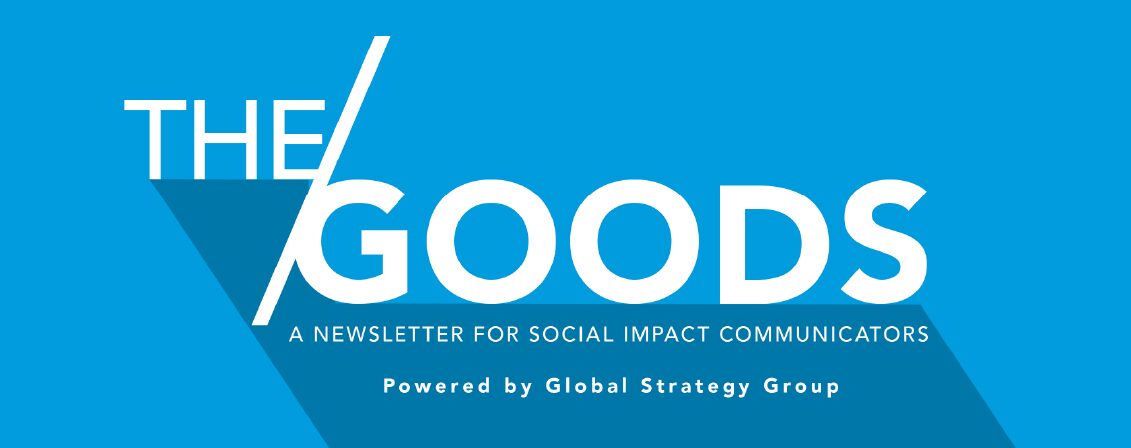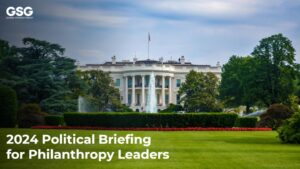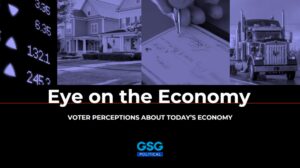
As a public affairs professional, you can probably name countless CEOs at the drop of a hat. You likely know these names because they belong to some of the most powerful people in the world, running some of the most famous organizations. But that’s not the only reason. You also know them because they and their team have a robust executive thought leadership program in place.
In today’s competitive marketplace, C-suite leaders are sought after for their expertise, not only on their brands, but their perspectives on their industry at-large, business trends, leadership principles, and more. This month’s edition of The Goods hones in on the many benefits of an effective thought leadership program and how brands and organizations are capitalizing on this visibility.
The Goods is a newsletter for social impact communicators that helps you keep track of the latest updates, trends, industry best practices, and much more. This content is compiled and curated monthly by Jade Floyd, Victoria Dellacava, and Mia Saponara.
Navigating the Complexities of a Humble Nonprofit Executive
If you have any experience working with nonprofit executives, you know that many are hesitant to highlight themselves as opposed to their organization and its impact. Sometimes these concerns are for good reason—maybe an executive is worried about a forthcoming business challenge or tough regulatory environment, or they just aren’t yet comfortable in public-facing settings.
And, while controversy still drives coverage, not every leader needs to take strong stands on hot-button issues to be newsworthy.
As PR professionals, part of our job is to assuage our principals’ fears and identify solutions that make them feel comfortable.
When nonprofit executives are uneasy about highlighting themselves in a thought leadership campaign, emphasize to them that the campaign not only benefits their individual profile but helps drive their organization’s mission forward. Ask your principal, “What do your stakeholders need to hear from you about your organization’s work and impact?”
(PR News)
Establishing Your Principal as an Industry Influencer
An executive thought leadership program not only elevates a company in the marketplace but also promotes the principal to a position of influence in the industry at large. As a result, the executive stands to garner public trust and can leverage that influence with policymakers, regulators, and other decision-makers that impact their company and their industry’s bottom line.
Here are seven key aspects of a successful and impactful thought leadership campaign:
- Thought leadership doesn’t just require being an expert in a field. It requires a leader who is willing to go beyond conventional wisdom to shape industry perspectives.
- Leaders must have the time and energy to build a unique personal brand that can be showcased across different platforms, from online to industry events.
- By consistently sharing insights that reflect market trends, challenges, and opportunities, leaders can create a unique niche with their audiences.
- Engagement with stakeholders is essential for any thought leadership campaign. Build a platform for executives to participate in industry events, conferences, and workshops to share their expertise, exchange ideas, and build lasting connections.
- The best leaders always have their eye on the future. Sharing new ideas for innovation and industry disruption helps executives stand out from their peers.
- Executives should leverage earned, social, and digital media to target a wider audience.
- Like any good campaign, a thought leadership program should be constantly assessed for successes and areas of improvement, monitoring KPIs and outcomes.
Snippets From GSG

An Election Update for Philanthropic Leaders
There is a lot at stake this election cycle: from the White House to local statehouses, from abortion and voting rights to the future of our democracy – which is why we hosted a recent webinar to give philanthropy and impact-driven leaders an insider look at what’s shaping the future of politics and policy in America.
If you missed it, please reach out to Jade Floyd to receive a copy of the webinar recording. And be sure to keep an eye out for future webinars relevant to the field!

Eye on the Economy Research Series
Now in its fourth year, the Eye on the Economy research report explores recent shifts in how U.S. voters view the economy today, their personal finances, and their outlook on their financial future. Our research finds that, surprisingly, since last August, voters have grown less concerned about their personal finances and are generally more optimistic. Learn more about the findings and read the full report here.
(Coming Soon) New ESG research
Last week, GSG’s impact team sat down with a curated group of ESG leaders from various industries ranging from real estate and finance to hospitality and advocacy to discuss the challenges they face in the highly politicized field. We dove into the contentious political landscape, the struggle to responsibly collect and report data, and how they set their priorities when making ESG-related decisions. Our research team is now taking the insights discussed and using them to inform our next report. Stay tuned for insights coming this summer.
In the meantime, check out last year’s reports on ESG: Business & Politics and the ESG Monitor.
Did we tell you something good? Share with a friend.